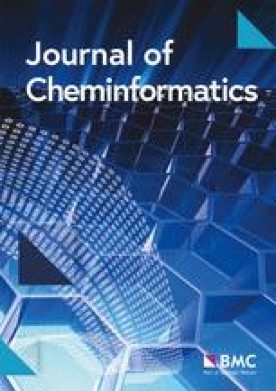Representation of chemistry transport models simulations using knowledge graphs
IF 7.1
2区 化学
Q1 CHEMISTRY, MULTIDISCIPLINARY
引用次数: 0
Abstract
Persistent air quality pollution poses a serious threat to human health, and is one of the action points that policy makers should monitor according to the Directive 2008/50/EC. While deploying a massive network of hyperlocal sensors could provide extensive monitoring, this approach cannot generate geospatial continuous data and present several challenges in terms of logistics. Thus, developing accurate and trustable expert systems based on chemistry transport models is a key strategy for environmental protection. However, chemistry transport models present an important lack of standardization, and the formats are not interoperable between different systems, which limits the use for different stakeholders. In this context, semantic technologies provide methods and standards for scientific data and make information readable for expert systems. Therefore, this paper proposes a novel methodology for an ontology driven transformation for CHIMERE simulations, a chemistry transport model, allowing to generate knowledge graphs representing air quality information. It enables the transformation of netCDF files into RDF triples for short term air quality forecasting. Concretely, we utilize the Semantic Web Integration Tool (SWIT) framework for mapping individuals using an ontology as a template. Then, a new ontology for CHIMERE has been defined in this work, reusing concepts for other standards in the state of the art. Our approach demonstrates that RDF files can be created from netCDF in a linear computational time, allowing the scalability for expert systems. In addition, the ontology complains with the OQuaRE quality metrics and can be extended in future extensions to be applied to other chemistry transport models. Development of the first ontology for a chemistry transport model. FAIRification of physical models thanks to the generation of knowledge graphs from netCDF files. The ontology proposed is published in PURL ( https://purl.org/chimere-ontology ) and the knowledge graph generated for a 72-h simulation can be accessed in the following repository: https://doi.org/10.5281/zenodo.13981544 .用知识图表示化学输运模型的模拟
持续的空气质量污染对人类健康构成严重威胁,是决策者应根据指令2008/50/EC进行监测的行动点之一。虽然部署大规模的超局部传感器网络可以提供广泛的监测,但这种方法无法生成地理空间连续数据,并且在物流方面存在一些挑战。因此,开发基于化学输运模型的准确可靠的专家系统是环境保护的关键策略。然而,化学输运模型缺乏标准化,并且格式在不同系统之间不能互操作,这限制了不同利益相关者的使用。在这种情况下,语义技术为科学数据提供了方法和标准,并使专家系统能够读取信息。因此,本文提出了一种新的方法,用于CHIMERE模拟的本体驱动转换,这是一种化学传输模型,允许生成表示空气质量信息的知识图。它可以将netCDF文件转换为RDF三元组,用于短期空气质量预报。具体而言,我们利用语义Web集成工具(SWIT)框架以本体作为模板来映射个体。然后,在这项工作中为CHIMERE定义了一个新的本体,重用了目前其他标准的概念。我们的方法证明了可以在线性计算时间内从netCDF创建RDF文件,从而允许专家系统的可伸缩性。此外,本体论与OQuaRE质量度量相一致,可以在未来的扩展中进行扩展,以应用于其他化学传输模型。化学输运模型的第一个本体的发展。通过netCDF文件生成知识图,实现了物理模型的标准化。提出的本体发布在PURL (https://purl.org/chimere-ontology)上,为72小时模拟生成的知识图可以在以下存储库中访问:https://doi.org/10.5281/zenodo.13981544。
本文章由计算机程序翻译,如有差异,请以英文原文为准。
求助全文
约1分钟内获得全文
求助全文
来源期刊

Journal of Cheminformatics
CHEMISTRY, MULTIDISCIPLINARY-COMPUTER SCIENCE, INFORMATION SYSTEMS
CiteScore
14.10
自引率
7.00%
发文量
82
审稿时长
3 months
期刊介绍:
Journal of Cheminformatics is an open access journal publishing original peer-reviewed research in all aspects of cheminformatics and molecular modelling.
Coverage includes, but is not limited to:
chemical information systems, software and databases, and molecular modelling,
chemical structure representations and their use in structure, substructure, and similarity searching of chemical substance and chemical reaction databases,
computer and molecular graphics, computer-aided molecular design, expert systems, QSAR, and data mining techniques.
 求助内容:
求助内容: 应助结果提醒方式:
应助结果提醒方式:


